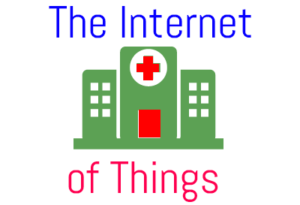How the IoT is Changing the Medical Game
Health Informatics Column
By Greg Dastrup
Greg Dastrup is a business consultant specializing in healthcare. In his spare time he loves to travel the world and spend time with his family. Read more from Greg on his blog: https://kinja.com/greg-dastrup
COLUMN
 The healthcare industry has benefitted from quite a few major innovations over the past decade, ranging from the implementation of digital patient records to the incorporation of tablets, like Apple’s iPad, into everyday patient care. Those developments are impressive in their own ways, but they really were only laying the groundwork for something even bigger: The Internet of Things.
The healthcare industry has benefitted from quite a few major innovations over the past decade, ranging from the implementation of digital patient records to the incorporation of tablets, like Apple’s iPad, into everyday patient care. Those developments are impressive in their own ways, but they really were only laying the groundwork for something even bigger: The Internet of Things.
The Internet of Things, or IoT, is a transformation in the way healthcare, and virtually every other daily activity, is performed, digitized, and made available. This radical transformation will bring healthcare into a world where almost every medical device has an Internet connection. That means improvements in patient outcomes, cloud-based data storage, and data accessibility. It will change health provider-patient interaction and treatment procedures in a big way.
Healthcare: The Driving Force of the Internet of Things
When most people think of the Internet of Things, their mind jumps to the connected home or the connected car. Those innovations are excellent ways of utilizing always-on connectivity, but they aren’t the ones that are going to drive development of the IoT in a major way. Instead, it’s healthcare that is expected to both benefit the most from the IoT and contribute the most, in an economic sense, to connected devices. In fact, healthcare is expected to contribute as much as $2.5 trillion dollars in value to the Internet of Things by 2025, in an industry that overall will be worth as much as $6.25 trillion by that time. It’s projected that no other industry will contribute more than this amount.
What Does This Mean for the Health Industry?
The IoT and its wide array of connected devices will transform patient care and medical discoveries using one key phrase: cloud-based data. The cloud has become a part of most people’s lives in recent years, whether it stores their family pictures, their smartphone backups, or important work documents that can be accessed from anywhere in the world. The IoT will push medical and healthcare data into the cloud as well.
Take the case of the vendor neutral archive, a replacement for traditional medical imaging. In an era before the Internet of Things, medical images were taken exclusively on film, which then had to be developed and filed away on a per-patient basis. Access to those images was limited in a very real way by their physical, rather than digital, existence. With PACS, those same images are stored remotely in a secure, cloud-based environment for universal access on behalf of the patient.
This is one example, but it’s not the only one. The Internet of Things could enable data-rich transmissions and cloud-based storage from all routine medical devices. That data could then be accessed by the full array of a person’s healthcare providers, where trends could be monitored and proactive treatments could be recommended. Outcomes will improve, insights will improve, and modulation of data will become the new way of diagnosing and anticipating patient health concerns.
Big Data Comes to Big Healthcare
Before the Internet of Things, the most common type of data collected by medical devices was “machine to machine” data, often used only to diagnose technical problems with the devices themselves. In the era of widespread IoT devices, collected data will be broader. Everything from a patient’s medical history and their medical images to data from a pacemaker, a fitness band, a smartwatch, and other home devices will be synergized together as they communicate back and forth.
The Internet of Things will be changing the game for health professionals, medical devices, and patients to the tune of $2.5 trillion dollars over the next ten years. As IoT develops, it’s likely to transform the way that healthcare itself evolves. With more data readily available, and universal access to key patient information across healthcare providers, efficiencies will be increased alongside margins. The goal of providing better, more affordable care to more people will likely be realized. And the goal of having both inter- and intra-device communication will finally happen after decades of making small moves in that direction.

OUR SPONSORS

Visit the Nursing Informatics Learning Center for resources, courses, news, and other informatics related content.
IMAGE CREDIT: Hospital graphic by Freepik from Flaticon is licensed under CC BY 3.0. Made with Logo Maker






